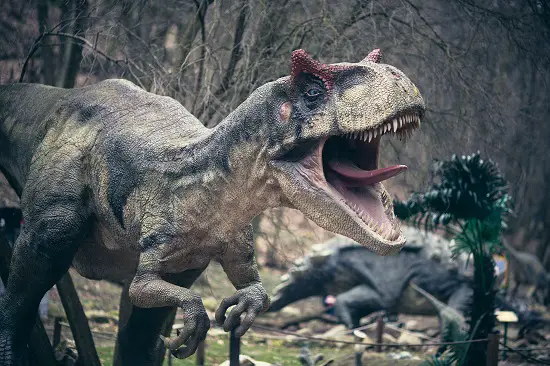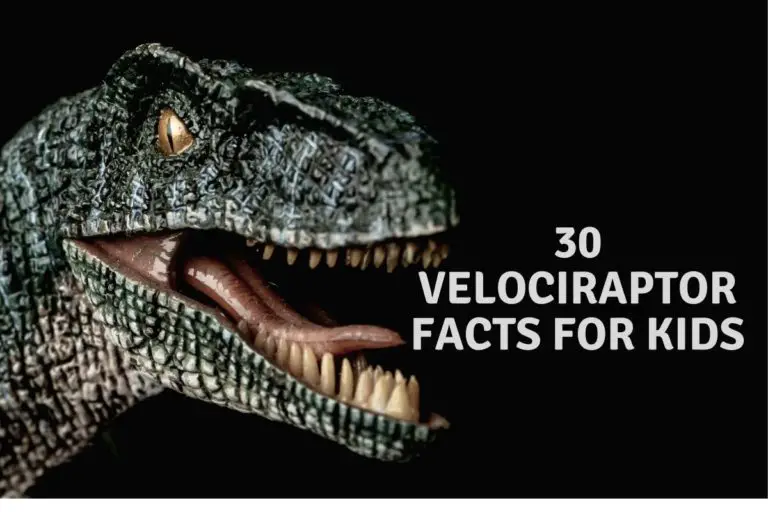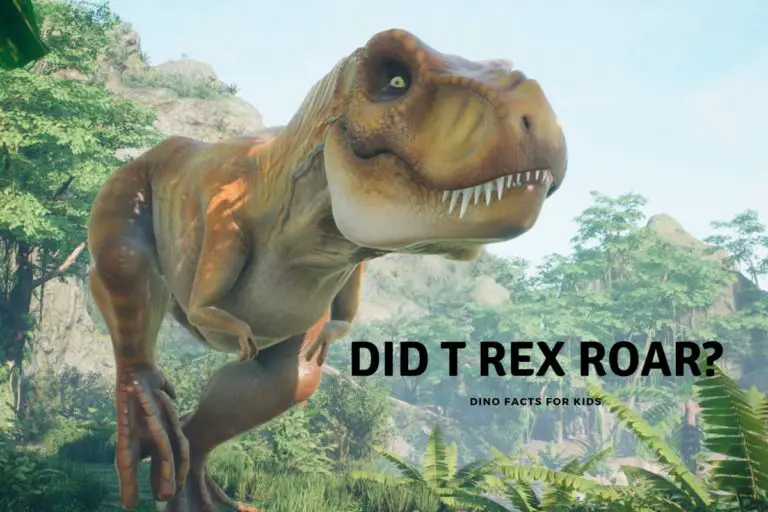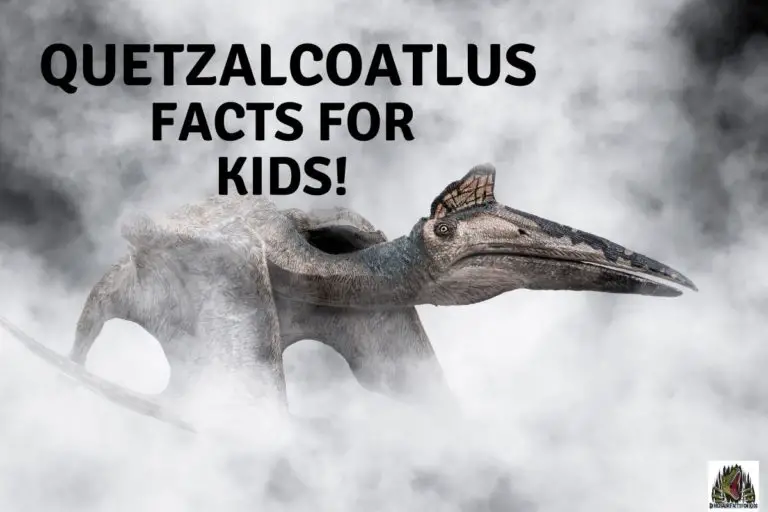How Big Was Allosaurus?
Allosaurus is one of the more famous dinosaurs that roamed the Earth during the late Jurassic period, around 155 to 145 million years ago in what is now North America. It’s famous for being a fierce predator with sharp teeth and powerful legs that could run fast and catch its prey. Being one of the more famous dinosaur carnivores questions often come up on its size. So we take a look at how big an allosaurus was here.
Allosaurus, a Late Jurassic predator, was up to 12 meters long, 4.5 meters tall, and weighed up to 3,000 kg. Its size, along with its sharp teeth and strong jaws, made it a fearsome hunter capable of taking down prey larger than itself. Comparisons with other dinosaurs of the time have given us a detailed understanding of this impressive creature’s appearance and capabilities.
So those are the Allosaurus stats but we are going to explore the size of the allosaurus a little more deeply in this article. We’ll take a closer look at the anatomy of Allosaurus and the different methods that scientists use to estimate its size. We’ll also examine the various factors that may have influenced Allosaurus’ size, from environmental conditions to competition with other dinosaurs and compare it to some other dinosaurs, both famous and food!
We are about to dive deep into the world of Allosaurus and discover just how big this mighty dinosaur really was!

How Big was the Allosaurus
Overall, the size estimates for Allosaurus vary somewhat depending on the method used, and when it was measured but most estimates suggest that it was around 8-10 meters (26-32 feet) in length, 3+meters (10+feet) in height at the hip, and weighed between 1,000-3,000 kilograms (2,200-6,600 pounds).
These estimates make Allosaurus one of the largest predators of its time, and certainly something for other dinosaurs to be worried about if they came across it during the late Jurassic
| Dinosaur | Length | Height at the hip | Weight | When it Lived |
|---|---|---|---|---|
| Allosaurus | 8-9.7 meters (26-32 feet) | 3 meters +(10+ feet) | 1,000-3,000 kilograms (2,200-6,600 pounds) | Late Jurassic (155-145 million years ago) |
Many paleontologists measure dinosaur height to the hip, rather than the head or other parts of the body, because the height of the hip is a more stable reference point for estimating the overall size of the animal. The height of the head, for example, can vary significantly between different individuals or species, whereas the hip height is more consistent.
How Do We Know the Size of an Allosaurus?
There are quite a few ways that scientists can and do use to estimate the size of all dinosaurs including the Allosaurus. These include:
- measuring bones,
- creating 3D models of the dinosaur .
- comparing it to living animals with similar body structures.
Measure their bones
One of the most common methods is to measure the length and circumference of various bones, such as the femur and tibia, (leg bones to you and I!) and use these measurements to calculate the dinosaur’s size. It’s not like we can find a live allosaurus and get out the tape measure!
Make 3d Models
In addition to bone measurements, scientists can also create 3D models of Allosaurus using computer software and compare them to other dinosaur models to estimate its size. This is a much more popular way to do this now, but has only been really available for the last 20 or so years.
This method allows researchers to account for variations in bone shape and size that may have been present in different populations of Allosaurus due to the time or location of where they lived.
Compare to other animals and dinosaurs
Another method is to compare Allosaurus to living animals with similar body structures, like crocodiles, alligators, lizards birds and even other dinosaurs.
By examining the size and shape of these animals, scientists can make educated guesses about the size of Allosaurus based on its physical characteristics and those similarities with other animals. .
A Quick Look at the Allosaurus
To understand the size of Allosaurus, it’s important to first examine its anatomy or body shape.
Allosaurus was a theropod dinosaur, which means that it was bipedal and walked on two legs. It also, like other theropod dinosaurs, had a long tail to help with balance.
It had a large head with sharp, serrated teeth that it used to catch and tear apart prey. Its jaw muscles were also incredibly strong, allowing it to deliver powerful bites to prey and maybe even like an axe! We have a facts about allosaurus article linked below with more on this.
Its arms were relatively small compared to its body size, although more useful than a T-Rex Arms, and it had long, powerful legs that allowed it to run quickly and chase down prey. Its leg bones were also strong and thick.
Allosaurus had a relatively flexible backbone with numerous vertebrae, which allowed it to twist and turn while running or attacking prey.

Comparisons to Other Dinosaurs
When it comes to size, Allosaurus was a formidable predator, but it was not the largest dinosaur of its time. In fact, there were several other dinosaurs that were even bigger and more massive than Allosaurus both in its area and elsewhere.
For example, the massive sauropod dinosaurs Apatosaurus and Brachiosaurus were much larger than Allosaurus, with lengths of up to 30 meters (100 feet) and weights of up to 80,000 kilograms (175,000 pounds).
These massive herbivores would have been a formidable challenge for even the largest Allosaurus individuals. so…
There is evidence that stegosaurus was on the menu for allosaurus, although the meal could come at a price and some of this evidence shows that a stegosaurus did not go quietly into that dark night!, and fought back with its four spiked tail. We have more information on this here.
Other large carnivorous dinosaurs of the time, such as the Spinosaurus and Carcharodontosaurus, were also larger than Allosaurus. Spinosaurus, in particular, was one of the largest carnivorous dinosaurs ever discovered, with an estimated length of up to 15 meters (50 feet) and a weight of up to 20,000 kilograms (44,000 pounds) although this is now heavily disputed and thought to be around 17,000 pounds.
Despite not being the largest dinosaur of its time, Allosaurus was still an impressive predator, with lengths of up to 9.7 meters (32 feet) and weights of up to 3,000 kilograms (6,600 pounds). Its combination of speed, agility, and sharp teeth would have made it a fearsome opponent for many of the other animals of the late Jurassic period.
Table 1: comparing the length, height, and weight of Allosaurus with some other well-known dinosaurs:
| Dinosaur | Length | Height | Weight | When it lived |
|---|---|---|---|---|
| Allosaurus | up to 9.7m | up to 4.5m | up to 3,000 kg | Late Jurassic (155-145 mya) |
| Stegosaurus | up to 9m | up to 4m | up to 5,000 kg | Late Jurassic (156-144 mya) |
| Tyrannosaurus rex | up to 12.3m | up to 6m | up to 9,000 kg | Late Cretaceous (68-66 mya) |
| Spinosaurus | up to 16m | up to 6m | up to 20,000 kg | Late Cretaceous (112-93 mya) |
| Baryonyx | up to 10m | up to 3m | up to 2,400 kg | Early Cretaceous (130-125 mya) |
| Parasaurolophus | up to 10m | up to 4m | up to 3,500 kg | Late Cretaceous (76-73 mya) |
It’s worth noting that these estimates are based on fossil evidence, and that the exact size and weight of these dinosaurs may have varied depending on factors such as age, sex, and individual variation. Additionally, new discoveries and research may lead to updates and revisions of these estimates in the future.
We have more information on Allosaurus and other large carnivorus dinosaurs here on the site.
- Allosaurus Vs. Baryonyx
- What is the State dinosaur of Oklahoma – its a similar dinosaur just to be clear!
- Allosaurus Facts
We have a series of articles on How Big Dinosaurs were and you can follow the links below to check out the size of other popular dinosaurs.
And if you wanted to know some of the smallest dinosaurs ever you can check out the article on the site as well. As although dinosaurs are often thought to be huge monstrous animals there were plenty of small ones as well and we take a look at them on the link above.
Conclusion
Although not the largest dinosaur and not even the largest carnivore ( that’s always an argument) Allosaurus was still an impressive creature, Its sharp teeth, strong jaws, and agile body made it a formidable hunter, capable of taking down prey much larger than itself.
At 30 feet long, up to 6,600 lbs and fast and agile it would be a sight not many dinosaurs would welcome as it came running towards them.
References
- https://www.wvgs.wvnet.edu/www/museum/museallosaurus.htm#:~:text=Allosaurus%
- https://www.fossilguy.com/gallery/vert/dinosaur/allosaurus/index.htm
- https://en.wikipedia.org/wiki/Allosaurus
- https://www.diffen.com/difference/Allosaurus_vs_Tyrannosaurus
Hi, I am Roy Ford a General Studies and English Teacher who has taught all over the world. What started as a fossil collection became a great way to teach, motivate and inspire students of all ages and all over the world about dinosaurs and from that and children’s love of dinosaurs came the site dinosaur facts for kids, a resource for all ages.







